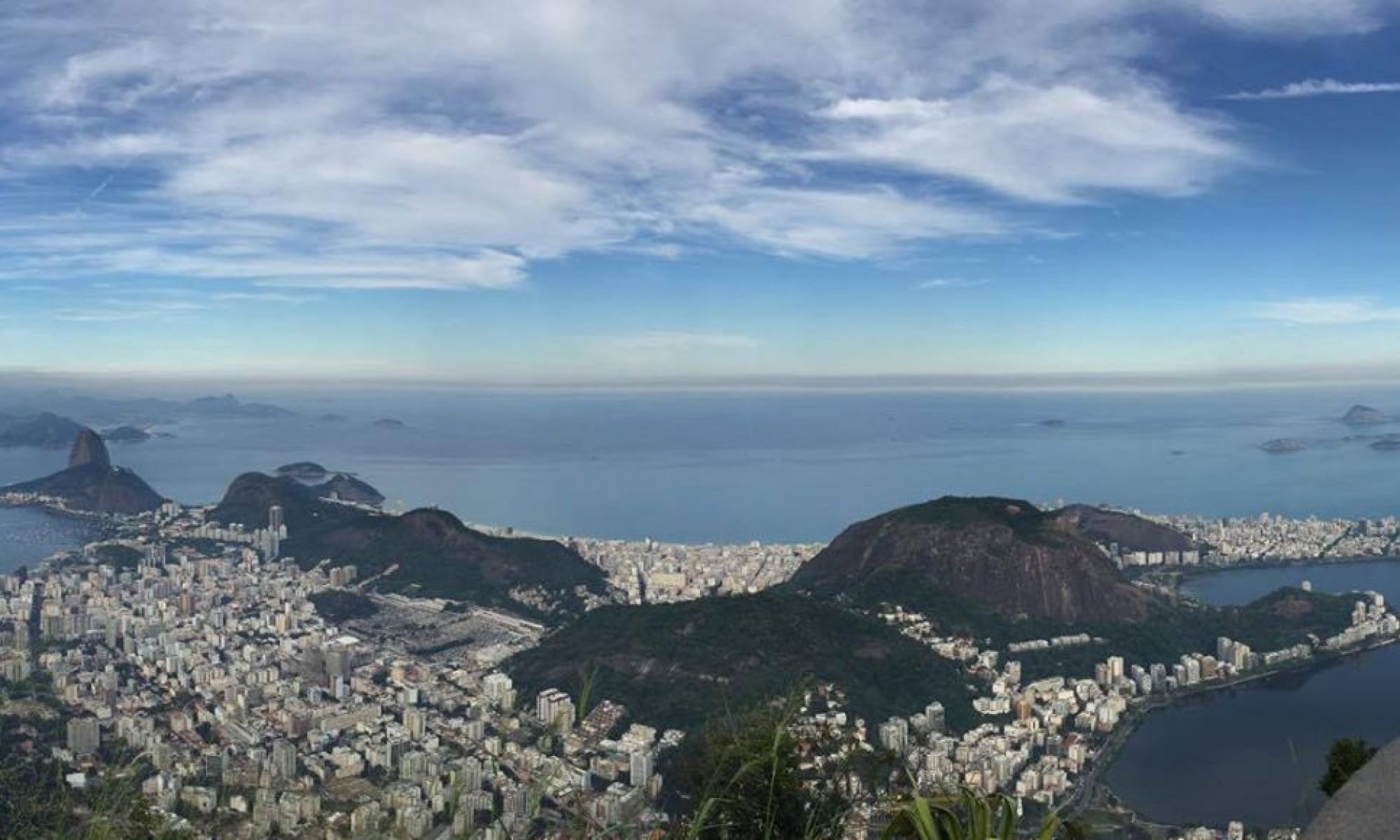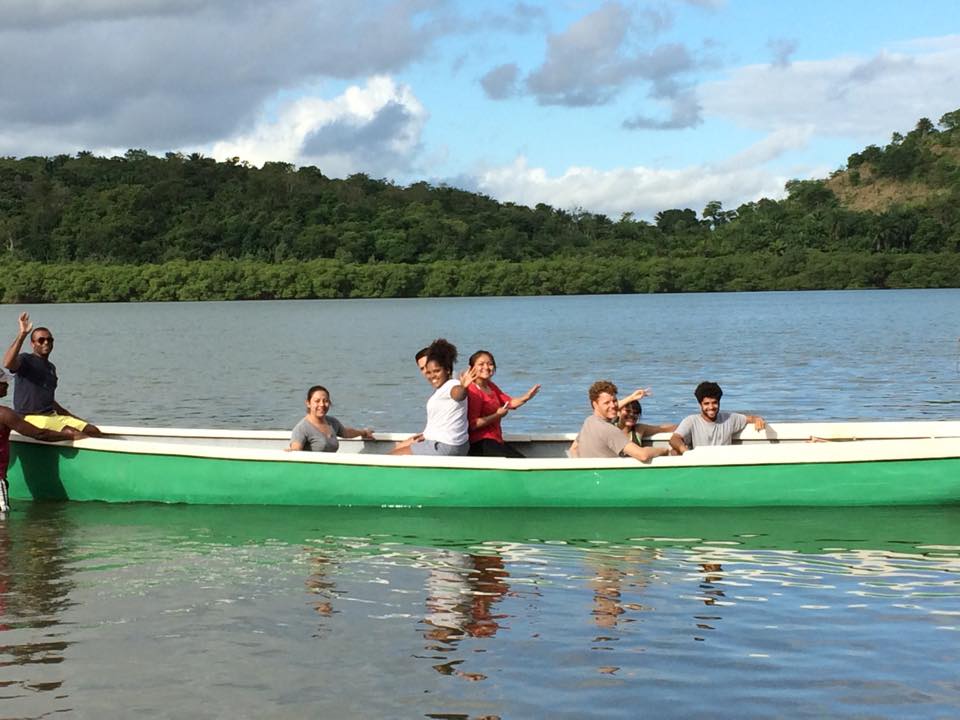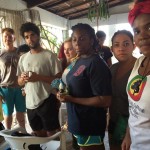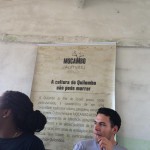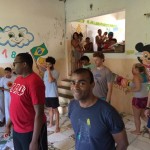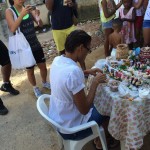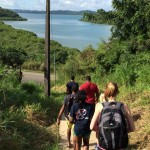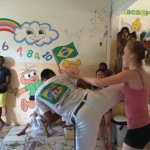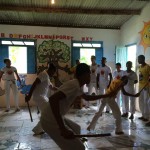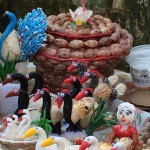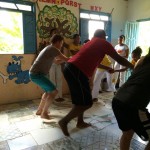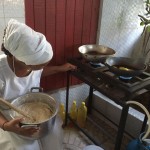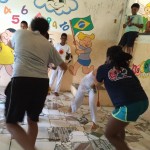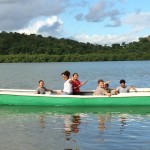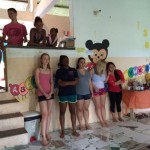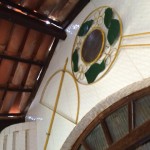June 17, 2015
By: Robert Hill
Today we left at around 9:00a.m. to travel to a Quilombo, a runaway slave community about an hour away from our hostel. Quilombos originated in the sixteenth century as a community of slaves that fled to the backlands in order to escape the cruelty of the slave owners and the horrendous living conditions associated with slavery. In Five Centuries of Change by Thomas E. Skidmore he discusses one of the largest known as Palmares which “At its height numbered some twenty thousand inhabitants”(Skidmore:2010,36). This is just an indicator for how vast the communities were at their inception. As we arrived in the quilombo known as Morro de Tororó, we were greeted by our guide Luicanna Reis, a community organizer, and immediately jumped into to learning about the culture of this quilombo.
Our first activity was a capoeira class in the local community center. Our instructor, a mestre, gave us a brief introduction to the art form before we began to learn the techniques behind capoeira. Capoeira was created in order for the slaves to learn how to defend themselves from the slave-owners. They disguised their practice of the art form by pretending to dance while the slavers would walk by so that they could continue training. Capoeira practices are traditionally taught while listening to music which both inform the practitioner of the rhythm of the moves but also tell the story of the martial art. Once we started I noticed that the movement of the martial art was very fluid. It was all about momentum and flexibility; it was as if your body was moving on its own. As the music played the body moved, it was very much a simultaneous action. After our hour and a half long class, we were shown an amazing demonstration by the students of the capoeira class. Their skill and movements were amazing, we even where invited to spar with them. They were easily out of our league but it was definitely fun. After the demonstration they did a traditional stick fight dance. According to capoeira tradition, after sparring the warriors perform a traditional stick ceremony to release their anger with the slave masters. The harder they smacked the sticks the more anger was released. The ceremony was beautiful.
After our capoeira experience we ate at the community kitchen, where the women of the neighborhood learn professional culinary skills in order feed the community and their guests as a form of community development. After we ate, one of the women in the community came out and spoke to us about the history of the village and the current problems that they face. One major problem was the privatization of public space around the community. Their traditional lands have been taken by the Brazilian Navy. It has gotten so extreme that they have fences which represent what land is theirs and what land is the governments. Marines even sometimes patrol the community with guns just to intimidate community members in the hopes they will move. This fence separates the community from the soccer field, fishing routes, their farm lands and even access to the city. This reminded me of quote from Fortified Enclaves: The New Urban Segregation. In this article, Caldeira says “Enclaves provide a sense (perhaps an illusion) of control and protection over ones surroundings”. The government creates this ideology of control by putting up the gate around the community. After our talk with the women we began to go in groups on a boat tour of the nearby fishing areas. From the tour, we saw the majestic image of nature that surrounds the community. We also saw the navy base, a modernized building which represents the hardship and difficulty for this community in regaining access to their land.
Once we returned to the village we went to the local community terreiro or a Camdomblé center. Candomblé is a religion found in Brazil that is strongly influenced by religions from Africa, which came to Brazil by means of the slave trade from the 16th to 19th century. The religion has a strong Catholic influence and is very popular amongst the Afro-Brazilians. Once in the center we met various women dressed in traditional clothes and they made acarajé for us. Acarajé is mashed black eyed peas fried in ball form, it is served split in half and stuffed with vatapá and caruru – spicy pastes made from shrimp, ground cashews, okra, palm oil and other ingredients. While there we ate and talked about our day so far. Afterwards, we said our goodbyes and headed towards the hostel.
After our time in the village it was amazing to see how strong of a community identity the quilombo has. Everyone there was fully invested into the community. There was one point where we saw the capoeira master drop off one of his students. Professor Brito asked him if the student was his sonand he said “no but I am his teacher so I feel like his father”. In the community there was this group mentality where everyone needed to be well off so that the individual could be happy. It was truly beautiful to be amongst them today and it just made me want to bring that same kinship back to my own hometown.
